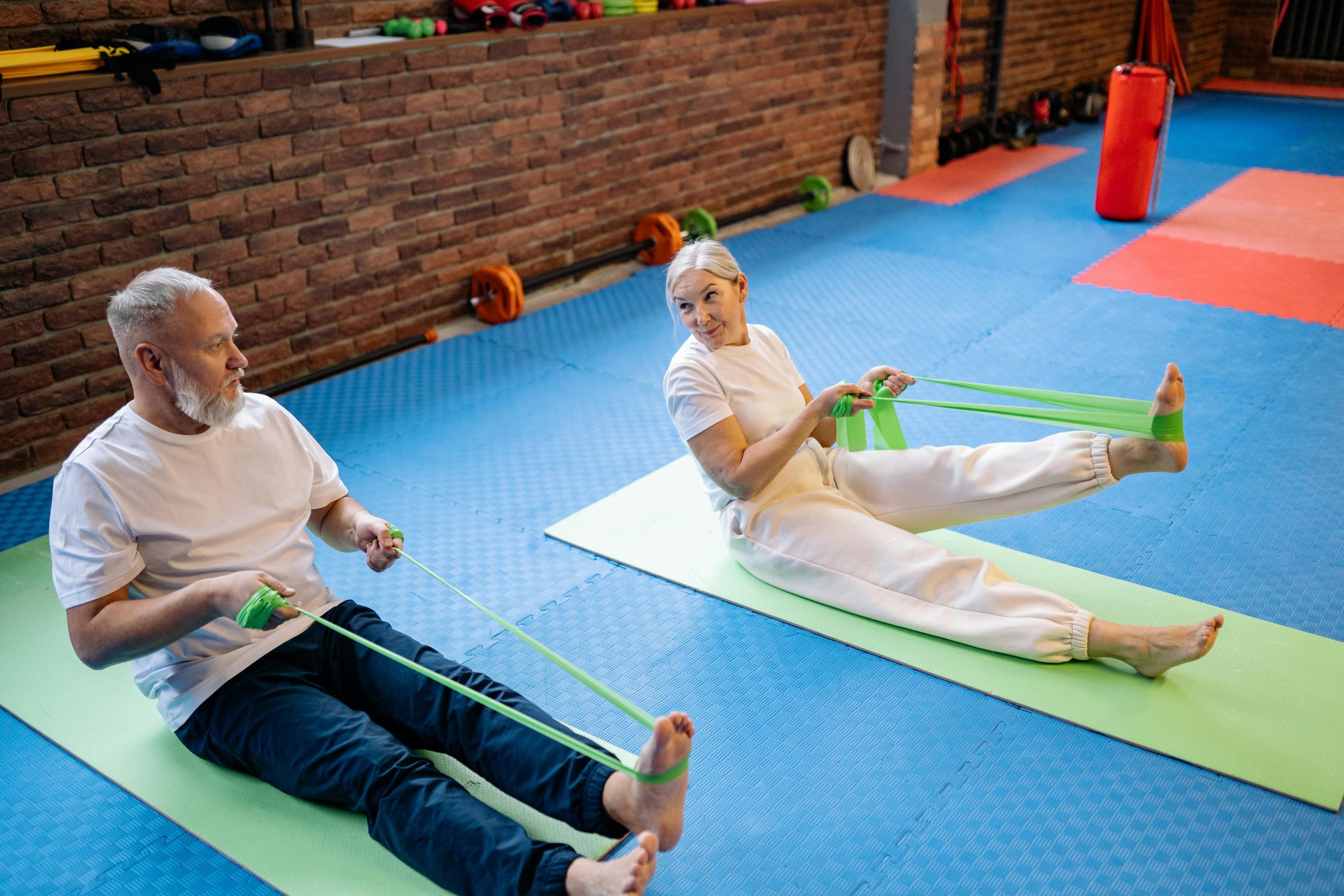The Importance of Staying Flexible as You Age
As we age, maintaining flexibility becomes increasingly vital for overall health and quality of life. Flexibility plays a crucial role in preserving mobility, reducing the risk of injuries, and enhancing physical and mental well-being. While aging naturally leads to a gradual decline in flexibility due to changes in muscles, joints, and connective tissues, incorporating targeted exercises and practices can help maintain and even improve your range of motion. This guide explores why flexibility is essential for aging individuals and how to integrate simple strategies to stay agile and active.
Why Flexibility Declines with Age
As the body ages, several physiological changes impact flexibility, including:
- Loss of Muscle Mass: Aging leads to a gradual decline in muscle mass, reducing the strength needed for full range of motion.
- Joint Stiffness: Decreased production of synovial fluid, which lubricates joints, results in stiffer movements.
- Changes in Connective Tissues: Tendons and ligaments become less elastic, limiting flexibility.
- Reduced Physical Activity: Many individuals reduce their activity levels as they age, accelerating the loss of flexibility.

Benefits of Staying Flexible
Flexibility contributes significantly to maintaining independence and overall health as you age. Key benefits include:
1. Enhanced Mobility and Balance
Improved flexibility supports better posture and coordination, reducing the risk of falls and injuries.
2. Reduced Pain and Stiffness
Regular stretching alleviates stiffness in joints and muscles, easing discomfort associated with arthritis or other age-related conditions.
3. Improved Circulation
Flexibility exercises enhance blood flow to muscles, promoting faster recovery and overall vitality.
4. Increased Range of Motion
Maintaining flexibility ensures you can perform daily tasks like reaching, bending, or lifting without strain.
5. Boosted Mental Well-Being
Stretching and flexibility routines often promote relaxation and stress reduction, contributing to mental clarity and emotional balance.

Effective Flexibility Exercises for Older Adults
Incorporating safe and gentle exercises into your routine can improve flexibility without risking injury.
1. Stretching
- Hamstring Stretch: Sit on the edge of a chair and extend one leg forward with the heel on the floor. Lean slightly forward until you feel a stretch in the back of your thigh.
- Cat-Cow Stretch: Get on your hands and knees, arching and rounding your back to improve spinal flexibility.
2. Yoga
Practices like gentle yoga or chair yoga focus on improving flexibility, balance, and strength.
- Example Poses: Downward Dog, Warrior Pose, and Seated Forward Bend.
3. Tai Chi
This low-impact practice enhances flexibility, balance, and coordination through slow, flowing movements.
4. Dynamic Stretching
Movements like leg swings or arm circles prepare muscles for activity and improve mobility.
Tips for Maintaining Flexibility as You Age
- Stay Consistent: Perform flexibility exercises 3–5 times per week to maintain progress.
- Warm Up Before Stretching: Gentle cardio, like walking, helps prepare your muscles for stretching.
- Avoid Overstretching: Stretch to the point of mild tension, not pain, to prevent injuries.
- Use Props: Tools like yoga blocks, straps, or resistance bands can aid flexibility exercises.
- Incorporate Variety: Combine static, dynamic, and movement-based flexibility routines for comprehensive benefits.

Flexibility Across Life Stages
| Life Stage | Flexibility Needs | Recommended Activities |
|---|---|---|
| Young Adults | Enhance flexibility to prevent future mobility issues. | Yoga, Pilates, and dynamic stretching. |
| Middle Age | Counteract the decline in joint and muscle elasticity. | Daily stretching and Tai Chi. |
| Older Adults | Maintain independence and reduce stiffness. | Gentle yoga, chair exercises, and walking. |
Common Myths About Flexibility in Aging
- Myth: Flexibility naturally disappears with age, and there’s no way to regain it.
- Truth: Regular stretching and physical activity can significantly improve flexibility at any age.
- Myth: Stretching alone is enough to maintain flexibility.
- Truth: Combining flexibility exercises with strength and balance training is more effective.
- Myth: Older adults shouldn’t stretch because it increases injury risk.
- Truth: Safe and gradual stretching routines tailored to your abilities are highly beneficial.
The Future of Staying Flexible
The importance of flexibility is gaining recognition in the fitness and health industries. Emerging tools, such as flexibility trackers and smart exercise equipment, are making it easier for older adults to monitor their progress and stay consistent. Virtual fitness programs tailored to seniors are also becoming increasingly popular, providing guidance and motivation from the comfort of home.
Conclusion
Staying flexible as you age is crucial for maintaining independence, reducing pain, and improving overall well-being. By incorporating simple flexibility exercises into your routine and addressing common misconceptions, you can continue to move freely and enjoy life to its fullest. Remember, it’s never too late to start your flexibility journey. Begin today, stay consistent, and embrace the benefits of staying agile and active at any age.

Leave a Reply